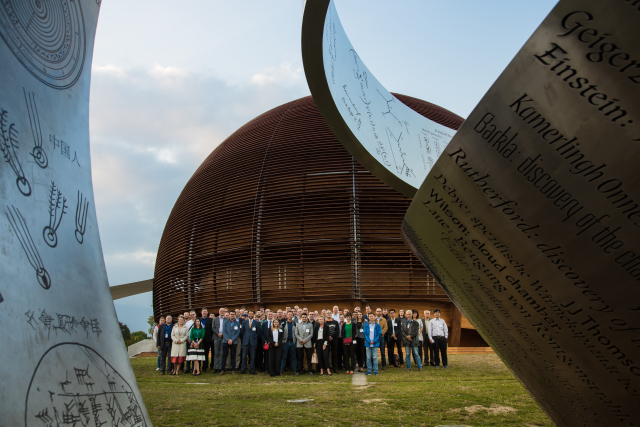As the home of the world’s largest cryogenic machine, the LHC, CERN is a world leader in cryogenic safety, particularly at very low temperatures. So it was natural for the HSE unit to invite cryogenic safety experts from around the world to CERN to network and share best practices. Over three days in September, 120 of these cryogenic safety experts discussed their research and the challenges they face. They mulled over regulatory frameworks and had the opportunity to visit cryogenic installations at CERN. Their discussions included Kryolize, a new CERN technology tailored for the LHC with a wide range of potential applications.
Kryolize is a software tool for sizing relief valves that protect against overpressure. It is based on international and European standards and was originally conceived to respond to the specific needs of CERN to develop valves for use with the very low temperature of liquid helium. There are some 120 tonnes of liquid helium in use at the LHC, cooling 36 000 tonnes of superconducting magnets to just 1.9 degrees above absolute zero. By developing this approach, Kryolize has filled a very important niche. “There are standards in industry, but they do not exist for the very low temperatures we work with,” explains project leader Andre Henriques. “The unique benefit of Kryolize is that you can use it for any kind of cryogenics, from liquid helium to liquid argon or nitrogen.”
Kryolize is supported by the Knowledge Transfer (KT) group, and benefits from funding from CERN’s KT Fund. Since 2015, the tool has become increasingly sought after. As a KT Fund project, experimental verification of the cryogenic parameters used within the tool, together with software development on a Graphical User Interface and harmonisation, are major goals. Excellent progress has been made on both fronts, the former via an R&D collaboration with the Karlsruhe Institute of Technology in Germany. Kryolize currently has 30 users at CERN, and six licenses have so far been granted to other research laboratories. When the project reaches its conclusion in mid-2017, Henriques anticipates a potential for applications in domains ranging from the food industry to cryogenic techniques in medicine.
CERN people were also given the chance to discover CERN’s role in cryogenic safety through discussions over a sample of ice cream, flash frozen with liquid nitrogen, to round off their lunches at Restaurant 1 on the first two days of the seminar.

After three days at CERN, seminar participants left wiser about the state-of-the-art of cryogenic safety, and with a thirst for more. “This event just shows that cryogenic safety is every bit as important as the development of new cryogenic technology,” says Henriques. CERN’s first Cryogenic Safety Seminar could be the first in an international series, ensuring that safety is fully factored in to any new project from the start.

